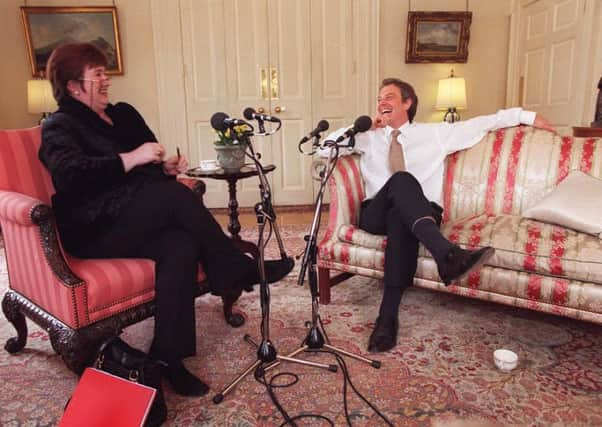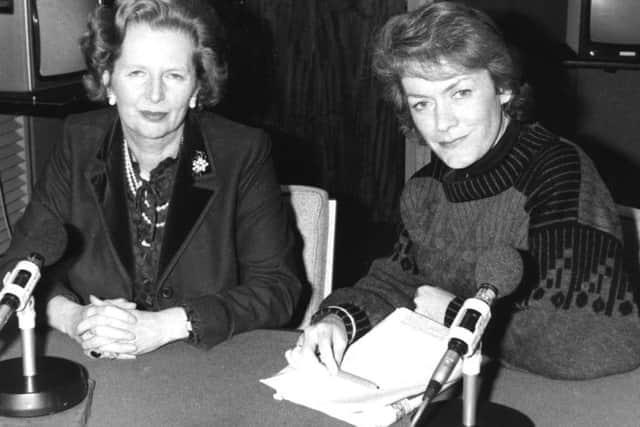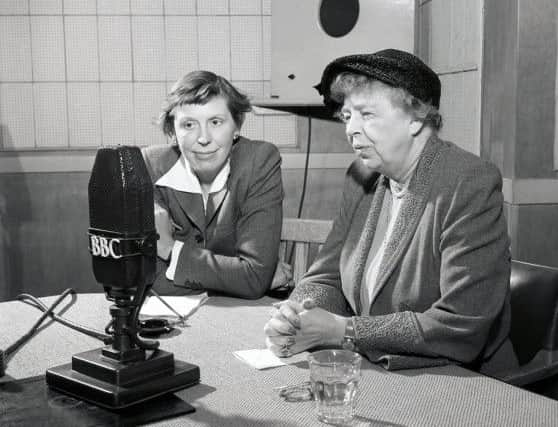Woman's Hour still offering a female perspective 70 years on


But when Woman’s Hour was first broadcast on Radio 4 exactly seven decades ago, on October 7, 1946, it was a man - former RAF intelligence officer Alan Ivimey - given presenting duties.
Ivimey, who specialised in “writing for and talking to women”, lasted just three months and was replaced by Joan Griffiths. But the show itself has proved significantly more durable and 70 years later is still going strong, commanding a weekly audience of 3.7 million listeners.
Advertisement
Hide AdAdvertisement
Hide AdMuch has changed since the first episode, when the guests were Elsie Crump, a butcher’s wife, Hollywood star Deborah Kerr and Labour politician and feminist Margaret Bondfield.


The then-afternoon programme was commissioned by Norman Collins, who said in 1967: “I always visualised the poor, wretched housewife, her morale probably at the lowest, at around 2 o’clock in the afternoon, when she had the washing up and lunch to do.”
He said he did not want an “endless succession of light music” but “speakers talking on topics that would be of interest to the intelligent woman” and that there were too many “programmes in which the intelligence of the woman is underrated”.
The first programme, broadcast in post-war Britain, discussed topics such as “mother’s midday meal” - herrings, kippers or a baked potato - and “putting your best face forward” - wear lipstick, put on powder and don a headscarf.
Advertisement
Hide AdAdvertisement
Hide AdSome listeners complained that the advice given to housewives was patronising and assumed that they were ignorant, and they asked why the presenter was a man.


Shortly afterwards, there would be programmes on equal pay and the menopause, causing some consternation for BBC bosses.
When what was then known as “the change” was discussed on air, it was seen as deeply shocking, with a listener stating they were “embarrassed to hear hot flushes, diseases of the ovaries and the possibility of the removal of the womb discussed at 2 o’clock in the afternoon”.
The programme broadcast the recording of a birth in the 1950s.
Advertisement
Hide AdAdvertisement
Hide AdIn the 1990s, Woman’s Hour moved from 2pm to the morning, when it is still broadcast today.


There were also plans to attract more male listeners by changing its name, but there was a revolt at Radio 4 and the title Woman’s Hour stayed. Today, around 40 per cent of the magazine show’s listeners are male. On New Year’s Eve in 2004, the programme became Man’s Hour for one episode, presented by Jon Snow.
Barnsley-born Dame Jenni Murray became the regular presenter of Woman’s Hour in 1987. She told listeners that she had breast cancer at the end of a programme in 2006, before she underwent treatment.
Violet Carson, who played Ena Sharples in Coronation Street, presented Woman’s Hour for five years in the 1950s.
Advertisement
Hide AdAdvertisement
Hide AdGuest editors on the programme have included Harry Potter author JK Rowling and Doreen Lawrence, the campaigner and mother of murdered teenager Stephen Lawrence. Woman’s Hour is also a hit with younger listeners - it is the second most popular daily podcast across all BBC radio after The Archers.


Presenter Lauren Laverne created a playlist to celebrate the programme’s birthday - featuring tracks by 70 female artists from the last 70 years.
Asked about the show’s success, Dame Jenni said: “Woman’s Hour survives because it’s endlessly interesting (anything from the prime minister to cooking the perfect artichoke salad to George Clooney to urinary incontinence), completely trustworthy and always up to date on the often neglected interests and concerns of 52 per cent of the population.”
Fellow host Jane Garvey said: “The gender pay gap featured in the first couple of weeks and unfortunately we are still going on about it.”